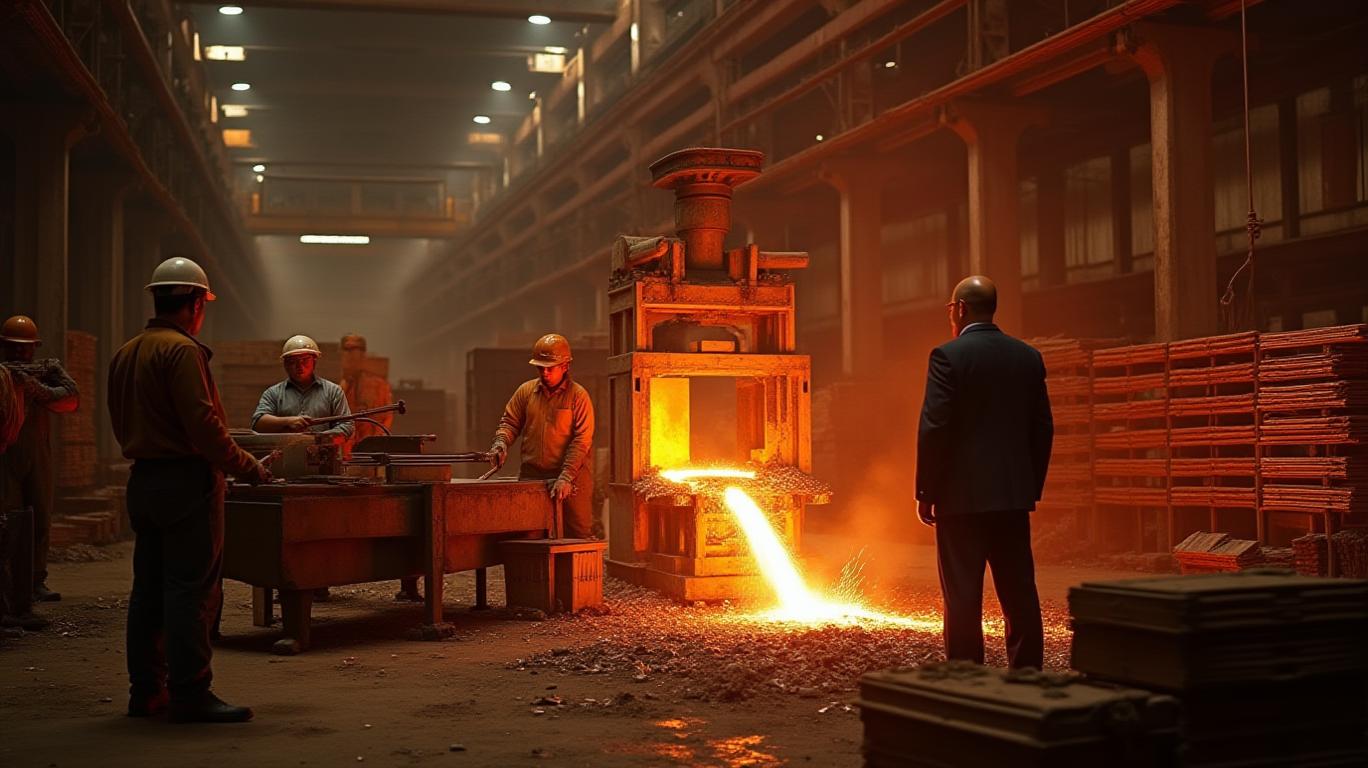Rio Tinto and Glencore: A Merger in the Making for Copper Dominance
Cyrus ColeThursday, Jan 16, 2025 6:45 pm ET

Rio Tinto and Glencore, two of the world's largest mining companies, have held early-stage discussions about a potential merger, according to people familiar with the matter. The talks, which remain in the early stages, could result in the mining industry's largest-ever deal and reshape the global landscape. A deal would create a mining behemoth with immense global reach and control over vital resources like copper, iron ore, and coal.
The combined entity would boast enormous reserves of various minerals, giving it substantial leverage in negotiations with governments and consumers. However, regulatory hurdles and potential opposition from competitors will need to be overcome for the merger to be finalized. Environmental concerns and labor relations are also expected to be crucial factors in shaping the outcome of these deliberations.
The potential fallout for various stakeholders remains to be seen as these talks unfold, promising a dynamic period of intense speculation and scrutiny within the mining sector. The combined entity would have significant exposure to iron ore and coal, which could impact its long-term financial performance. However, the strategic benefits of a merger in terms of copper production and market dominance are substantial.

A merger between Rio Tinto and Glencore would offer significant strategic benefits in terms of copper production and market dominance. Here are some key points supported by data and quotes from the materials:
1. Combined Copper Production: Rio Tinto and Glencore's copper production would rival that of BHP, the current market leader. Glencore's guidance for 2024 is around 1 million tonnes, while Rio Tinto's upper target is 720 kilotonnes. Together, they would produce approximately 1.72 million tonnes of copper, leapfrogging BHP's production (Source: MINING.COM).
2. Access to Major Copper Reserves: A merger would give Rio Tinto a stake in the Collahuasi copper mine in Chile, where Glencore has a 44% share. Collahuasi is one of the world's biggest copper reserves, with estimated reserves of 17.3 million tonnes (Source: Bloomberg).
3. Diversification and Risk Mitigation: Rio Tinto's heavy dependence on iron ore and exposure to China's market fluctuations could be mitigated by a merger with Glencore. This diversification would help the combined entity ride out downturns in specific commodities or regions (Source: Bloomberg).
4. Market Dominance: The combined entity would become the largest mining company in the world, overtaking BHP. With an estimated market capitalization of $158 billion, the merged company would have significant market influence and negotiating power (Source: Bloomberg).
5. Long-term Growth Potential: The global drive towards net-zero carbon emissions is expected to lead to a boom in demand for copper, as it is a key component in electric vehicles and renewable infrastructure. A merged Rio Tinto-Glencore would be well-positioned to capitalize on this growth (Source: Bloomberg).
These strategic benefits would enable the merged company to strengthen its market position, secure access to vital resources, and capitalize on long-term growth opportunities in the copper market. However, the combined entity's exposure to iron ore and coal could impact its long-term financial performance, and regulatory hurdles must be addressed to ensure a successful merger. As talks continue, the mining sector will be closely watching the developments between Rio Tinto and Glencore.
Disclaimer: The news articles available on this platform are generated in whole or in part by artificial intelligence and may not have been reviewed or fact checked by human editors. While we make reasonable efforts to ensure the quality and accuracy of the content, we make no representations or warranties, express or implied, as to the truthfulness, reliability, completeness, or timeliness of any information provided. It is your sole responsibility to independently verify any facts, statements, or claims prior to acting upon them. Ainvest Fintech Inc expressly disclaims all liability for any loss, damage, or harm arising from the use of or reliance on AI-generated content, including but not limited to direct, indirect, incidental, or consequential damages.

Comments
No comments yet